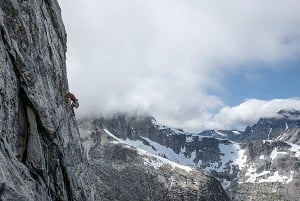
It has been dubbed the Yosemite of South America, and for good reason! Situated in the Andes on the Chilean side of Patagonia, the clover-shaped valley of Cochamó is a plethora of grey granite domes amidst a lush green jungle landscape. The valley has a similar feel to the Yosemite Valley without the noise of cars and bustle of tourists – so imagine Yosemite before the roads were built and you have Cochamó. The area has seen increased traffic from climbers in the last few years, but climbing has been going on here for at least the last 20 years with Crispin Waddy and Simon Nadin being amongst the first to ascend those mighty granite titans in the 90's.
Arriving in the town of Cochamó it's hard to believe that you're anywhere near some of the best Big Wall climbing in South America! That would be because you're not there yet, you still have another 4-5 hour slog up a muddy jungle trail until you reach the valley. In the final hour of the walk the trees start to break away allowing glimpses of granite outcrops, and finally, when you arrive in the meadow, the majesty of the Cochamó titans in all their glory is witnessed!
Cochamó has a feel of Yosemite to it, but to quote Chris Kalman from his Alpinist article "The Trail, the Road and the Space between":
"It still feels like the Golden Age here, although the surrounding woods seem centuries older. But if you're really going to push the Yosemite analogy, you have to accept a certain flexibility of time and space. Cochamo is not Yosemite now; it's Yosemite then."
It's a simplistic way of life void of technology and distractions. There are the locals who live there throughout the year, farmers living off the land and others off the tourism. The Arrieros (or Pilcheros) are a good example of this; the local horse folk who carry food, supplies and gear into the valley for locals and climbers also do guided tours on horseback.
Cochamo is not for everyone though; I'd go so far as to call it a Beginner Level Expedition. You're not in Baffin, but neither are you in Yosemite. You can't just pop out to the supermarket and pick up some supplies, but there's nothing here that will eat you alive (except the Tabanos – big hellish flies that are more annoying than lethal). The truth is that Cochamó puts a lot of folk off because it's a bit more epic and requires a tad more strategy than other locations – but I've found that with a bit of simple planning and some hidden tricks, your trip can be both fairly relaxed and incredibly rewarding.
The Climbing
The climbing in Cochamó is all granite. It's not glacier polished like in Yosemite and instead forms fairly heavier grained. It's hard to explain, but in part I felt Cochamó granite reminded me quite a lot of the British gritstone. Some of the arête pitches I've climbed are reminiscent of some of gritstones' best arêtes, but ten times longer!
Most of the routes attempt to follow the lines of weaknesses such as cracks and corners, but there is also a lot of face climbing. Cochamó has a reputation for flared "butt cracks" which can be tricky to climb and in many cases harder to place gear; but actually there is a good amount of variety in the styles of cracks from thin splitters to gnarly offwidths. Most of the climbing in Cochamó is on lower angled terrain such as slabs and vertical walls with fewer sustained overhangs than you would see in Yosemite, but because a lot of the features tend to be rounded it makes for a really intense, challenging and interesting style of climbing.
Recommended Routes - Easy to Hard
"E.Z. Does it" – 5.10d (10 Pitches)
"Presencia de mi Padre" – 5.10 (1500m – on El Monstruo)
"No Hay Hoyes" – 5.11a (6 Pitches)
"Al Centro y Adentro" – 5.11+ (500m)
"Las Manos del Dí" – 5.11+ (500m)
"Todo Cambia" – 5.11+
"Positive Affect" – 5.12b (1000m)
"Tigres del Norte" – 5.12d (1200m)
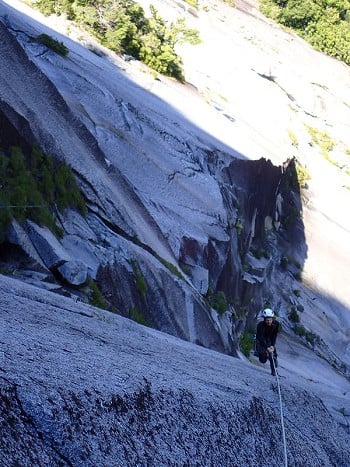
Going climbing in Cochamó is always a full value experience, from the approach to the climbing itself. Approaches can be anywhere from 1-4 hours on average (although El Monstruo is an 8 hour approach) from the campsite, so most folk set up camp at the base of climbs or under boulders near the area they want to go to and will spend a few days climbing before heading back down to rest for a day or two at the campsite. If you're psyched then doing day climbs from the campsite is also possible, just expect an extremely long day!
The routes themselves vary in length, but typically you're looking at 10-20 pitches per route, all of decent length (30+ metres per pitch). Most climbers go for single day ascents, taking with them a light daypack with only the essentials (food, water, headtorch, etc…), but Big Wall style with portaledge and haul bags is also done on the more challenging climbs and when new routing.
Cochamó is a multi-pitch destination, but there are single-pitch options as well – even a wet weather single pitch sport crag worthy of a few wet days that boasts climbs of all grades up to f8b+. And if you're of that creed that adores shuffling up boulders for 4 or 5 metres, then there is plenty of untapped Bouldering potential here too with only a very small amount that's been developed.
New Routing
You can't help but be blown away by the vast amount of rock in the Cochamó Valley, so much so that even if you're not into new routing, you will see the potential and most likely feel the burning flames of desire to go out and explore new lines - I know this from personal experience.
Cochamó new routing is a slow and dirty business but incredibly satisfying. Climbers realised early on that the crack lines on the walls weren't always what they seemed; often they'd be closed, flared and impossible to protect. In fact, the easiest way to identify a good open crack was through the lines of vegetation seen running down the wall – vegetation can only grow where a gap exists for water to run down and soil to collect. So to get into these cracks, you need to dig away at the vegetation and remove it first before climbing. Drew Smith told me that the best days he had new routing on "Positive Affect" (5.12b) was when the rains came. Whilst he was removing the vegetation, the torrents of water running down the wall acted like a jet wash, cleaning the rock as he went.
Of course, you don't have to stick to the crack lines and as mentioned earlier in the article, bolts are allowed where no passive protection can be placed. This opens up the potential for some mega Big Wall granite sport climbing! Some of the best pitches I've ever climbed are the arête pitches I bolted on the "La Junta Project".
The simple life…
I don't go to Cochamó just for the climbing. It's a simple life out there, a detox from the chaos of fast-paced living in a modern world. There is no internet and no phone signal – you'll shut that side of your life off and just live in the moment. You'll go out there wondering how on earth you'll survive without 3G, and within a few days, you'll wish you never had to go back!
The only technology I bring with me is my Camera, my Kindle my iPod, and my Goal Zero. The sun is intense, so having a good solar power kit means you can capture every moment, keep up on your reading and relax to some tunes.
Logistics
When to Go
The season for climbing in Cochamó is from December through to March. It does vary depending on how much snow fell during the winter months (remember that this is the Southern Hemisphere, so their summers are our winters). Some walls can still be wet in December from snowmelt, however December can also be the best month for climbing with long days (15 hours of light) allowing more time to complete big single push ascents.
January is usually still fairly quiet with things getting busier into February for climbers, walkers and general tourists. By March the days are shorter and it can be a little wetter.
How to Get There
Flights from the UK - From the UK there are several options available, but by far the easiest, quickest and least stressful is to fly London to Santiago followed by an internal flight from Santiago to Puerto Montt. If you purchase these flights in the same booking then you should be able to get all your bags put through to the final destination.
Sometimes flights direct to Santiago are a little more expensive, so it is also possible to break it up with a stopover in Sao Paulo (Brazil). In this case, make sure your layover is a decent length as sometimes it's impossible to get your bags put through to the final destination and you'll have to leave the terminal and check in with all your bags again.
From Santiago to Puerto Montt - When you arrive in Santiago, there is also the option to get an overnight (or day bus – 11 hour journey) to Puerto Montt. This can be a cheaper alternative, but adds a lot to the stress of the journey and depends massively on how much gear you've brought with you. If you have a lot of luggage, then you will have to pay for excess baggage on the bus. You will also have to pay for a taxi from Santiago airport to the Bus Terminal.
When everything is added together, the cash you save won't be a lot, and the stress you've gained probably won't be worth it. One year a member of our team had their bags stolen from the Bus terminal with all their camera equipment inside – that was an expensive day!
From Puerto Montt to Cochamó Town - Puerto Montt, the Blackpool of South America! It has a pier with a small theme park, restaurants and cafes to get tea/lunch/WI-FI and a lot of stray dogs to avidly avoid getting your recently purchased Cheese Empañada eaten by. It's certainly got a lot of character!
For travel onwards to Cochamo you have a few options available to you:
- Bus
- Van Hire/Pick Up Service
The bus is the cheapest option and thankfully also pretty easy. You can get a Bus direct from Puerto Montt to Cochamó Town. It's worth noting that if you get on the bus at Puerto Montt then you'll have a seat, whereas if you get it from Puerto Varas (a neighbouring town), you'll be standing in the crowded aisle.
If you're going to Cochamó for any longer than a week, then you'll have a lot of bags to carry onto the bus. For groups, it is advisable to hire a Van to pick you up from the airport and take you directly to Cochamó Town or the Trailhead. You could probably also arrange for the van to pick you up at the supermarket (or even wait for you) so you can get all your food shopping before heading on to Cochamó.
From Cochamó Town to the Trailhead - When you arrive in Cochamó Town (either by Bus or Car), your journey isn't quite over yet… The Cochamó Valley is still a 4-5 hour walk up a muddy jungle trail, and the trailhead is another 2 hours walk from Cochamó Town. You can get to the trailhead via Bus from Cochamó Town, of which they are fairly regular. You can also get a cheap taxi there as well if you want.
But if you're not in any rush, then Cochamó Town is a beautiful and idyllic place with a lot to offer the keen traveller. There is a charming pier looking on to the sea inlet and several restaurants including a quality (yet oddly themed) pizza place on the main road (you can't miss it – they have a Pirate Flag Logo and an abundance of Extreme Off-road racing pictures on the walls).
There are also several small grocery shops with stock to re-fill supplies if you run out in Cochamó. They are more expensive than Puerto Montt with a more limited choice, but you will be supporting local businesses and won't have to get a bus all the way back to Puerto Montt. They also stock alcohol, so if on your way out you want to avoid lugging heavy bottles in your baggage from Puerto Montt, then you can buy from here instead.
I also really like the little café called "The Coffee House" where you can get your last dose of WI-FI before going teetotal. They also make good coffee, cake and sandwiches there.
From Trailhead to Cochamó Valley - When you arrive at the trailhead you will then have to pass several tests… Do not worry, there is no Sphinx to test your lateral thinking capabilities, but there is a weigh-in for your bags if you're using horses to carry your supplies and a trailhead keeper who'll check to see if you're on "The List". Much like any A-Lister party, you will have to have a reservation - you can do this at www.reservasvallecochamo.org.
Note: If you DON'T have a reservation then you CAN'T enter the valley.
If you have a lot of equipment and supplies, it's likely you'll require packhorses to carry it into the Valley. Each packhorse can carry up to 65kg (depending on the horse), which is evenly distributed across both sides of the horse. Avoid putting anything fragile in the bags on the horses otherwise they might break – if you speak to the Arrieros (in Spanish) and explain where your fragile items are then they can help arrange your equipment/supplies in a way that can save them. However from personal experience I recommend carrying as much of the breakable items such as helmets and eggs on your person if possible.
Make sure to reserve your packhorse well ahead of arrival and do your best to estimate how much weight you'll require so they can prepare the right number of horses for you. Each horse will put you back 30,000 pesos (around £35) so it's good to know how many you'll need.
The Cochamo.com website stresses that you choose a horse guide that looks after their horses and works responsibly as guides. My recommendation and also the recommendation of www.cochamo.com is the guide company "Southern Trips", run by a local Chilean, Favian and his sister Tatiana. Favian, as well as being a well-respected horse guide in Cochamó, is also a well-respected climber having climbed El Capitan via "The Nose" in his heyday.
From here, you will then carry what weight you can on your back to the Valley yourself. I recommend taking all your camping equipment (tent/sleeping bag/air mattress/stove/some food) in your own pack in the off chance that you end up waiting some time for the horses to arrive. Sometimes in bad weather, the trail becomes too muddy for the horses, but still possible for eager climbers, in which case you will want to go on ahead and set up camp, then in the next day or so your packhorse will arrive with the rest of your supplies.
Accommodation Advertise here
No Premier Listings found in this area
In Puerto Montt - If you're staying over in Puerto Montt there are loads of hostels and B+B's to choose from. Air B+B is the best place to look, but on our first trip out we stayed at "Casa Perla's" which we thought was quaint, cosy and reasonably cheap. On the way back we stayed at a dodgy hostel, which frankly was an experience in itself, but what's life without a few dodgy hostel experiences…
In Cochamó Town - There are a growing number of places in Cochamó Town that offer a variety of services from simply a bed for the night, to bed + breakfast and pick up at Puerto Montt.
My No.1 recommendation for those wanting the least stress would be to stay a night in one of the fine Cochamó Town B+B's that also offers a pick-up service at the Airport in Puerto Montt. They might even come with you to the supermarket and wait until you to get your supplies. They will then take you to Cochamó Town, where you can have a nice meal, a shower, a good sleep and wake up refreshed and ready for the long walk into Cochamó Valley.
For the last 2 years, I've stayed at the Las Bandurrias Eco Hostal, a Swiss chalet style accommodation near Cochamó Town run by a very kind and helpful couple, Silvie and Manuel. Aside from the beds being heavenly to sleep on and the breakfast being outstanding (fresh swiss bread from Silvie), Manuel also runs a Pick Up Service at Puerto Montt, will take you to the supermarket to get your supplies and even to the trailhead on the morning you leave for the Valley.
In Cochamó Valley - There are a few different campsites, but my recommendation for climbers is "Camping La Junta", run by Daniel Seeliger and his wife Silvina. Daniel is one of the main developers of climbing in Cochamó and their campsite/Refugio business puts a lot back into the area from working to preserve the trails, to replacing bad bolts/anchors on climbs, to supporting the local community. Daniel and Silvina also work tirelessly to promote a healthy respect for the Outdoors amongst those that visit and are battling to prevent Cochamó from becoming just another Yosemite-style theme park for tourists.
Camping La Junta has running water, showers and spaces for cooking and hanging out on rainy days. They also limit the numbers of people staying there so the campsite never really feels that busy or noisy (especially compared to the campsites next door).
The Refugio is just over the river and is perfect for those wanting some more comfort during their stay.
Partners
The scene at Camping La Junta is bustling with climbers and there is no doubt about it that you will find folk to climb with even if you rocked up on your own without a rack… but I suggest bringing one in any case.
Outdoor Shops Advertise here
No Premier Listings found in this area
You can buy climbing gear and camping essentials (chalk, camping gas etc…) from any one of a number of Outdoor stores in Puerto Varas.
Food and Supplies
You can get food from supermarkets in Puerto Montt or Puerto Varas. It's supposed to be a bit more expensive in Puerto Varas as it's more of a tourist town. You can also get some supplies from Cochamó Town, but it will be a bit more expensive with limited choice.
Other Activities
Aside from climbing there is also a lot of walking to be done. The trails snake their way through the Patagonian jungle taking you through some of the most beautiful and varied landscapes I have ever seen. One minute you're in a dense jungle surrounded by ancient trees (Alerce – Patagonia's answer to the Giant Sequoia) that have existed there almost as long as the indigenous population, and next you're in an alpine meadow, the sun beating down on you with grey granite spires exploding out from the ground and huge granite boulders big enough to bivy under. For the adventurous Boulderer, there is a lot of potential here…
There are also some amazing rock pools and waterfalls that you can swim in and slide down - the water of the Rio Cochamó is cold but refreshing!
Guidebook
There is no official guide, but there are topos at Camping La Junta which you can take pictures of and some online topos on Mountain project.
You can also download all the Topos at www.cochamo.com/topos
Be Warned!
The sun is intense - we Brits will die if we don't lather Factor "something really high" in copious amounts all over our pasty white bodies.
There aren't many Mozzies, but there are Tabanos (flies) that may not leave much of an itch, but they do bite bloody hard and are quite challenging to kill!
Cochamó Valley may not be as isolated as Baffin Island's Sam Ford Fjord, but it should be given no less respect. Whilst you're out climbing you're almost always 5-6 hours from any help, and that's assuming you get into contact with someone straight away (which you won't). Getting into trouble or getting badly injured up there won't be an easy experience which is why you need to be aware of all potential outcomes, be prepared for anything and make sure people know where you are and what route you're on. Helicopter rescue is absolutely impossible and there is no Mountain Rescue Team to come save you – any Rescue attempt is usually co-ordinated by Daniel Seeliger at Camping La Junta and involves a lot of Voluntary Support from climbers staying at the campsite (I have been involved in one serious rescue).
I like to call Cochamó climbing trips a Beginner Level Expedition. I say this because it pretty much has all the makings of an expedition, with the seriousness of them toned down quite a bit:
You're going somewhere isolated – but there is still quite a lot of people
You have to bring all your own food – but if push comes to shove you can always leave for a day or two and get more
You have no communication with the outside world – but in absolute Emergency you can get it
If you fall and break your leg, it's going to be really really shit and a horrendous ordeal... but you won't get eaten by a Polar Bear
A Letter from "Organización de Turismo, Propietarios y Amigos del Valle Cochamó"
Who are we?
We – tour operators, horse guides, lodge employees, property owners, hikers, climbers and nature lovers – work to better care for the Cochamo Valley. To work together, we established the Organización de Turismo, Propietarios y Amigos del Valle Cochamó in 2017. Our goals include developing responsible and sustainable tourism and protecting areas of the valley for the conservation of nature and cultural patrimony.
The Problem
Tourism has grown at a fast rate during the last five years, receiving more than 15,000 tourists last season. The lack of visitor´s environmental education and the uncontrolled access resulted in overpopulation and saturation of certain areas. It caused camping installations to collapse (biofilters, bathrooms, showers), illegal camping, illegal campfires, trail erosion, cutting live trees, water contamination, accidents, garbage problems, among others.
The Project
To create a collaborative protected area providing responsible and quality tourism, and the conservation of natural and cultural patrimony of Cochamó Valley.
Cochamó Valley is not a park or national reserve. Approximately 62% of the valley is privately owned. This project is run by members and a directory who represent the actors in the valley (horse-guides, landowners, tour operators, neighbours, among others).
What has been done so far?
Since 2016 when our first meeting happened, even before formalizing the "Organización" and with very little resources, some of our achievements have been:
- establishing max capacities for most of the campgrounds according to their installations
- a media campaign for awareness on environmental risks and the need to make a reservation
- a website for reservations, information and environmental education
- control access station at the trailhead with a paid and trained team to give information, educate and check on reservations
- a collaborative network between the valley actors, other similar organizations and government.
Some improvements as a result of these actions are:
A better experience for tourists, improvement of Cochamó town´s economy that received people waiting for a reservation, less garbage, fewer accidents, less contamination.
If you want to help on any way or get more information contact us:
orgvallecochamo@gmail.com
- SKILLS: The Process: Training with Robbie Phillips - Ep. 5 24 May, 2016
- SKILLS: The Process: Training with Robbie Phillips - Ep. 4 24 Mar, 2016
- SKILLS: The Process: Training with Robbie Phillips - Ep. 3 11 Jan, 2016
- SKILLS: The Process: Training with Robbie Phillips - Ep. 1 & 2 27 Nov, 2015
- Training to Become a Better Climber - Part 5 12 Apr, 2012
- Training to Become a Better Climber - Part 4 13 Dec, 2011
- Training to Become a Better Climber - Part 3 21 Jul, 2011
- Training to Become a Better Climber - Part 2 9 Jun, 2011
- Training to Become a Better Climber - Part 1 5 May, 2011
- How to 'Warm Up' for Climbing 3 May, 2011

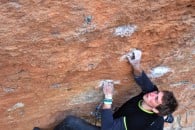


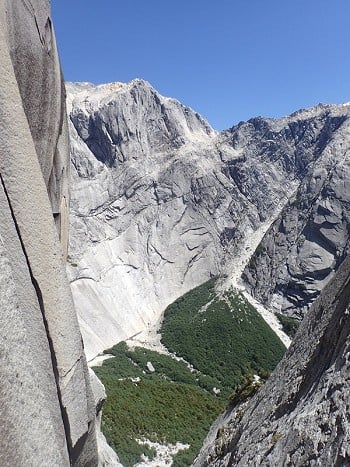

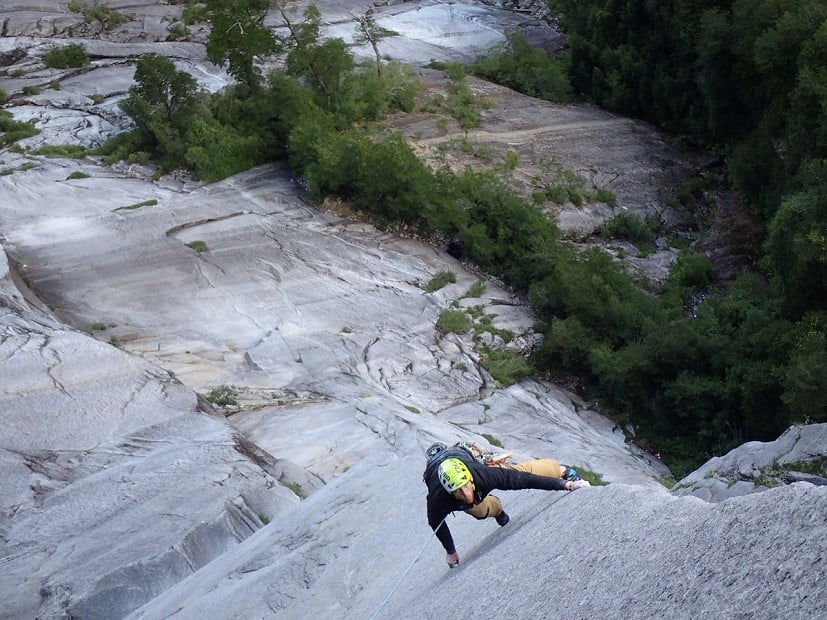
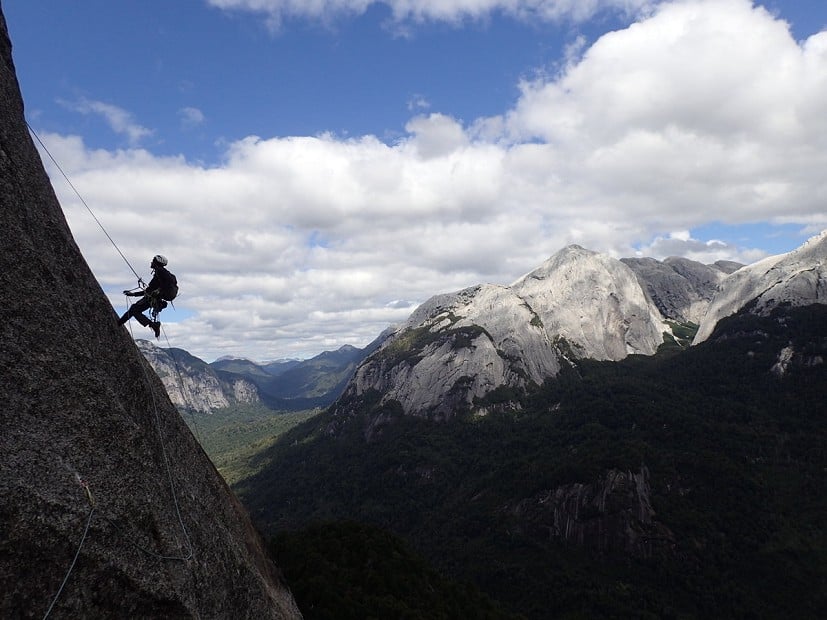
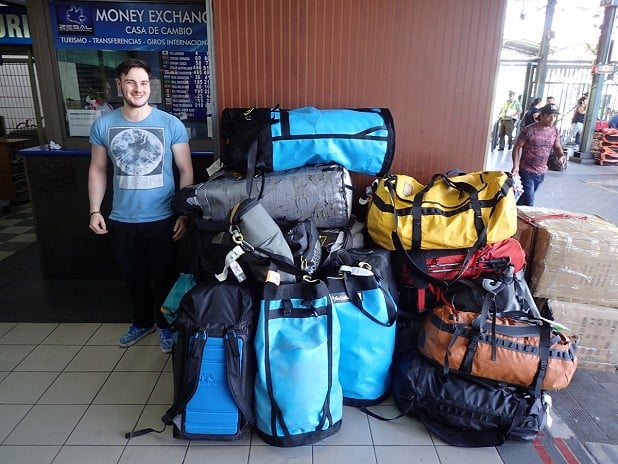
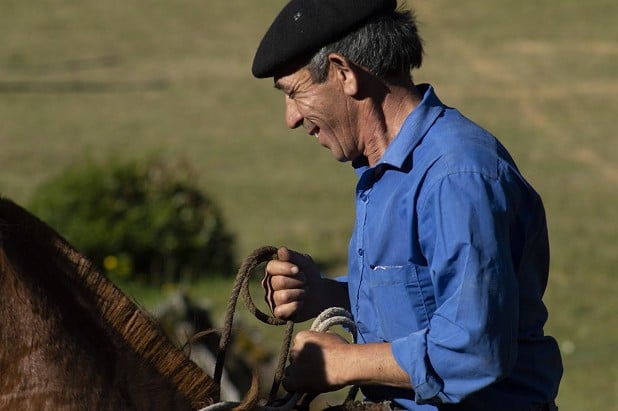

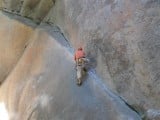




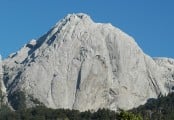
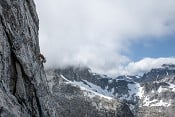
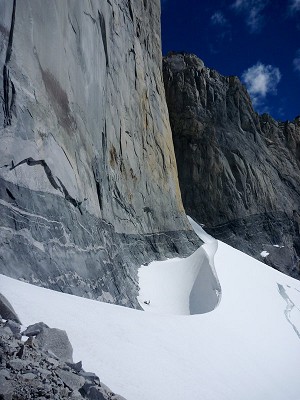

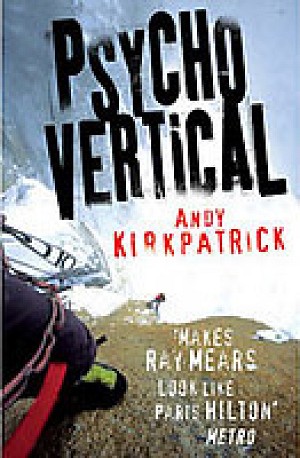




Comments
I noted these lines:
"Cochamó new routing is a slow and dirty business but incredibly satisfying. Climbers realised early on that the crack lines on the walls weren't always what they seemed; often they'd be closed, flared and impossible to protect. In fact, the easiest way to identify a good open crack was through the lines of vegetation seen running down the wall – vegetation can only grow where a gap exists for water to run down and soil to collect. So to get into these cracks, you need to dig away at the vegetation and remove it first before climbing."
And later on there is some recognition of the wonderful vegetation in the valley. I wonder if we could hear about the plants being removed - are they common or rare? Do the cracks full of vegetation form part of special cliff based ecosystems.
Are there so many of these vegetation filled cracks that cleaning a few for climbers won't make a difference or is it possible that we'll look back in 20 years and wish we'd taken a different approach?
We rightly get upset when there are threats to the landscapes we enjoy climbing in - perhaps we need to encourage environmental impact assessments when promoting new routing, especially in less visited parts of the world.
In reply to benmorr
Just like Scotland, Fairhead, Squamish, North Wales and the Lakes then... if you don't clear vegetation you don't climb. I suppose by just going climbing there's an undeniable impact.
https://www.patagonia.com/blog/2010/11/down-and-dirty-with-sonnie-trotter/
A very detailed article, good to see it getting some mainstream coverage. The "When to go" section implies that you get 15hrs of daylight and good climbing weather every day throughout December - March. The reality is that in general you get 2 days of rain in every 5 days, which is a useful thing to know.